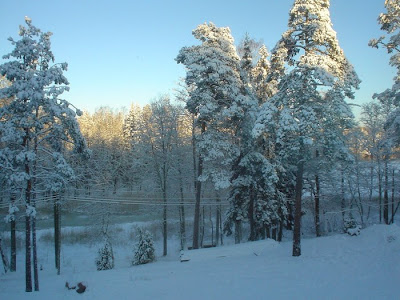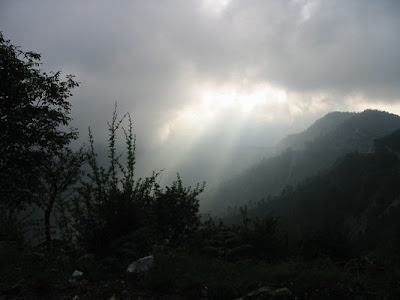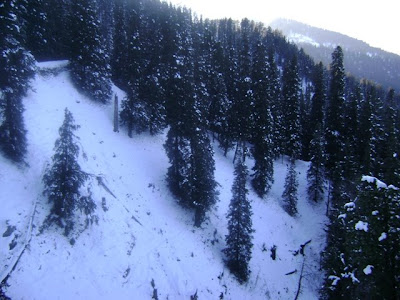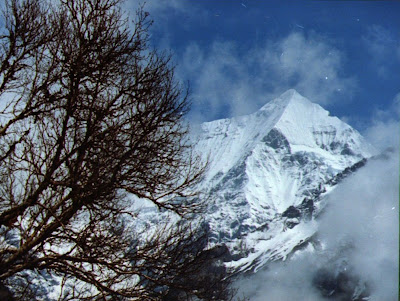
Gulmarg, the most exotic ski resort in the Himalayas, has been a favoured winter sports destination in India for many years. Gulmarg’s known visual aspect, premier location and proximity to Srinagar naturally make it one of the prime hill resorts in the country, in addition to Pahalgam and to some extend Sonamarg in Kashmir.
While Gulmarg is an all-weather resort with refreshing summer meadows and pastoral scenes to keep the camera busy, the main reason to come here, at least in winter, is the off-piste, deep-powder, long-run skiing and snowboarding. The Himalayan resort of Gulmarg is one of the newest and increasingly popular ski destinations. Head here for the world’s highest gondola ski lift and eye-popping views.gulmarg gondola heights Google Map of Gulmarg
Originally called ‘Gaurimarg’ by shepherds, its present name was given in the 16th century by Sultan Yusuf Shah, who was inspired by the sight of its grassy slopes emblazoned with wild flowers. Gulmarg was a favourite haunt of Emperor Jehangir who once collected 21 different varieties of flowers from here. Today Gulmarg is not merely a mountain resort of exceptional beauty- it also has the highest green golf course in the world, at an altitude of 2,650 m, and is the country’s premier ski resort in the winter.
Take a Hike!
All around are snow-capped mountains, and on a clear day one can see all the way to Nanga Parbat is one direction and SrinSome of the best slopes in the country for beginners and intermediate skiers are available at Gulmarg. Skiing equipment is available on hire from the Ski-Shop. In winter Gulmarg's natural slopes and inclines turn into the country’s premier skiing resorts. Not all tourists who visit in winter come for skiing - some simply are there to watch the skiing or to enjoy a holiday in the snow. Many of these are infected with the excitement of the skiers, and have donned their first pair of skis within a short while of their arrival.
Among the multitudes of slopes, there are a few which are serviced by ski lifts. Most of the skiing becomes centred on these slopes, which are specially suited to beginners and intermediate level skiers, with ski runs ranging from 200 m to 3kms, instructors are available for both levels.
As in the summer, when each individual sets his own pace for a holiday, so also in winter, skiing can be as adventurous as the holidaymaker can want. There are a number of slopes, not serviced by ski lifts, of varying lengths and gradients.
Each of these is quieter than the immensely popular ones with skilifts. Advanced skiers often trek in the snow for several hours to the very top of Apharwat peak, to make a descent lasting no more than 30 minutes. And now, with the operation of the Gulmarg Gondola Cable Car, it has become all the more convenient for skiing enthusiasts, as they can gain a ski run of nearly 3 kms with the help of this cable car which goes up to Kongdori.
There are a host of snow sports at Gulmarg at this time of the year. Tobogganing, the most popular among them requires no skill. No skill is required - a flat wooden board is taken up the hill and is allowed to descend downhill. There are also snow scooters and snow bobbing, neither requiring special skills.agar is another. It’s a popular day trip from Srinagar to Gulmarg, although many people extend their stay or use it as a base for trekking. The road from Srinagar rises gently towards the lower slopes of the range, passing through rice and maize fields.
Winter Sports In Gulmarg
Some of the best slopes in the country for beginners and intermediate skiers are available at Gulmarg. Skiing equipments are available on hire from the Ski-Shop. In winter Gulmarg's natural slopes and inclines turn into the country’s premier skiing resort. Not all tourists who visit in winter come for skiing - some simply are there to watch the skiing or to enjoy a holiday in the snow. Many of these are infected with the excitement of the skiers, and have donned their first pair of skis within a short while of their arrival.
Among the multitudes of slopes, there are a few which are serviced by ski lifts. Most of the skiing becomes centred on these slopes, which are specially suited to beginners and intermediate level skiers, with ski runs ranging from 200 m to 3kms, instructors are available for both levels.
As in the summer, when each individual sets his own pace for a holiday, so also in winter, skiing can be as adventurous as the holidaymaker can want. There are a number of slopes, not serviced by ski lifts, of varying lengths and gradients.
Each of these is quieter than the immensely popular ones with skilifts. Advanced skiers often trek in the snow for several hours to the very top of Apharwat peak, to make a descent lasting no more than 30 minutes. And now, with the operation of the Gulmarg Gondola Cable Car, it has become all the more convenient for skiing enthusiasts, as they can gain a ski run of nearly 3 kms with the help of this cable car which goes up to Kongdori.
There are a host of snow sports at Gulmarg at this time of the year. Tobogganing, the most popular among them requires no skill. No skill is required - a flat wooden board is taken up the hill and is allowed to descend downhill. There are also snow scooters and snow bobbing, neither requiring special skills.







